The structures in a horse's feet are responsible for supporting the full weight of the horse over a small area Routine foot care is therefore extremely important, as any problems in the feet can be extremely detrimental to mobility and health Structure of the horses foot Coronary band This is located at the top of the hoof and is responsible for creating horn that makes up the hoof wallAdult club foot requires a completely different approach to treatment than juvenile club foot In many cases, mild club foot is not associated with lameness or decreased performance Many great performance horses have managed to perform well with a club foot However, there is a greater likelihood of lameness occurring in club feet than in normal feet There is increased sole bruising A club foot horse is typically recognized and defined as having one front hoof growing at a much steeper angle than the other, with a short dished toe, very high heels, extremely curved wall and straight bars The club foot is also generally much narrower than the other and will usually have a substantially smaller and sensitive frog
Club Foot In Horses Equine Chronicle
How to correct clubfoot in horses
How to correct clubfoot in horses- Club foot results in a vertical hoof wall compared to other feet, a dropped sole and a dished front (dorsal) hoof wall It results from a deep flexor tendon that is effectively too short Trying to trim the heels alone does not help, and may worsen the problem The inferior check ligament is also known as the accessory ligament of the deep digital flexor tendon (DDFT)Equine Club Foot The equine club foot is defined as a hoof angle greater than 60 degrees What we see externally as the equine clubbed foot is actually caused by a flexural deformity of the distal interphalangeal joint (coffin joint) Causes include nutritional issues, heredity, position in the uterus or injury The condition is most often encountered in young animals and can be either



Welcome Princess 17 Page 2 Zenyatta Com Forums
Horses exposed to too many rocks without proper toughening of the soles – Genetic Often flat soles and thin soles are inherited Examine the hooves of dam and sire before breeding Be that as it may, there are steps we can take to mitigate tender soles – Keep the horse in dry corrals with sand or small pebbles – Apply daily iodine or turpentine solutions to the soles – Horses affected with club foot develop a flexural deformity of the coffin joint, due to a shortening of the musculotendinous unit that starts high up in the limb and inserts on the coffin bone in the foot, resulting in an upright conformation of the foot The muscle belly that controls the deep digital flexor tendon is located high in the limb above the knee at the back of leg In horses A club foot may also result from injury if the horse is lame and keeps favoring the sore foot, not putting much weight on the heel This lack of use may cause shortening and contracting of the muscles and tendons in that leg, eventually making that foot more upright The high heel and limited heel pressure and lack of expansion usually causes the club foot to
A horse with slightly asymmetrical feet is nothing out of the ordinary But if one hoof differs dramatically from the other, you might be dealing with a club foot A horse with a club foot is kind of like a horse in high heels The hoof angle becomes raised and the horse walks on his toe due to a shortening ofClub foot is very common in horses, and is seen almost exclusively in the front feet "Unfortunately we see a lot of this in foals, and many adult horses that have mismatched feet—more mismatched than normal No horse has two identical front feet (or hind feet);When a horse has a club foot, the horse is reluctant to take up the lead on the affected foot Horses are either right handed, left
The foot at the time of birth has some deformity but bony alignment is not impacted and foot position is likely corrected through conservative treatment involving a program of stretching, range of motion, and weight bearing In a small number of cases post conservative treatment the foot needs 1 or 2 Casts to ensure they are maintained in a corrected position although in the majorityExplore LISA's board "equine clubfoot" on See more ideas about horse health, equines, horse care tipsA "clubfooted" horse is defined by most people as a horse with one hoof that grows more upright (particularly at the heel angle) than its mate on the other side Normally we're talking about the front pair of hooves Many folks have treated it as a hoof problem and worked to make the pair of hooves match each other, but it is my opinion that this is a backwards way of looking at the




Recognizing And Managing The Club Foot In Horses Horse Journals



Conditions Treatment Page 3 Barefoot Hoofcare
Club Foot Conformation in Horses Caused by abnormal contraction of the deep digital flexor tendon, a club foot puts pressure on the coffin joint and initiates a change in a hoof's biomechanics Telltale signs of a club foot may include an excessively steep hoof angle, a distended coronary band, growth rings that are wider at the heelsClub Feet With the Club Foot, one foot is steeper than the other It wants to, needs to, etc but it is not a hoof problem The horse is adapting to something else Go on a detective mission There is/was an injury, nerve damage, or opposite hind stifle problem as examples Massage folks can really help the club foot horseTreating club foot Treatment for club foot usually starts within 1 to 2 weeks of your baby being born The main treatment, called the Ponseti method, involves gently manipulating and stretching your baby's foot into a better position It's then put into a cast This is repeated every week for about 5 to 8 weeks After the last cast comes off, most babies need a minor operation to loosen



Equine Podiatry Dr Stephen O Grady Veterinarians Farriers Books Articles



Club Foot In Horses Equine Chronicle
The normal pedal bone angle for most horses is between 42 and 48 degrees, when the physical angle of the pedal bones are greater than 48 degrees and both feet present with a more 'boxy' shape than normal, Club Foot Syndrome can be confidently diagnosed The Deep Digital Flexor Tendon contracture syndrome presents with normal pedal bone angles and a reasonably normal looking footTreatment of Club Foot in Horses Treatment begins with the diet Changing the formula to ensure a slow but steady growth is advisable Reducing the mother’s (the mare) diet from high starch and sugar rich cereal grains and eliminating unnecessary supplements will help Good quality grass hay rather than alfalfa is an advisable change For a foal with congenital flexuralThe current treatment of club foot in the UK is very well managed and there are high success rates achieved by experienced clinical teams However, parents still find the Boots and Bar treatment phase challenging and improving this phase of the treatment is the goal of the Cunningham Brace Photos courtesy of Cunningham Prosthetic Care LOC believes that the introduction of the




Laminitis Signalment Treatment And Prevention Flying Changes



Club Feet The Brutal Truth David Farmilo
Treatment and management The best course of action for a horse with one or more club feet depends on his age, the cause of the condition and the severity of the case "The goals are generally the same in managing these feet, at any stage of development, and any stage of severity," says Goodness "The main goal is to try to achieve alignment of the phalanges pastern Veterinarians usually cut the DDFT to correct severe stage II club feet A few horses have turned into sound riding horses after the surgery Foals with mild to moderate club feet with proper care have good outcomes Early treatment leads to a better prognosis Should I buy a horse with a club foot? Apparently the club foot condition has been with this horse since it was a foal This horse found it difficult to stand square or under himself before shoeing In photo 1 you can see the dish in the hoof wall is at or just below the coronary, a grade 3, whereas a dish at or just above the end of the toe would likely be considered grade 1 or 2 This club foot, as seen in photo 2, has




Recognizing Various Grades Of The Club Foot Syndrome




How To Treat Cracked Hooves On Horses Kauffman S
Club Foot Horses Versus Uneven Weight Distribution First off let's discuss exactly what a "club foot" is This term is widely misused with regard to its use in horses with uneven hoof growth patterns The term "club foot" actually refers to a congenital defect of the foot and according to The Free Dictionary, the medical definition is "a condition in which one or both feetFlexural deformities in the mature horse Club foot a hoof capsule distortion Figure 3a A grade 3 club foot on a mature horse Note the broken forward hoofpastern axis, the concavity in the dorsal hoof wall, the disparity in hoof wall growth between the toe and the heel and the poor hoof wall consistency distally Figure 3b Shows the frog to be receded between the hoof wall and aSoCalled Club Foot in Horses by James R Rooney, DMV Published in the October 1999 Issue of Anvil Magazine Fig 1 Drawings by Lungwitz (1910) Socalled "clubfoot" has long been a vexing problem for horsemen, veterinarians, and farriers The term clubfoot is a misnomer for the condition in the horse and correctly refers only to a congenital anomaly of the human foot Lungwitz (1910




Recognizing And Managing The Club Foot In Horses Horse Journals
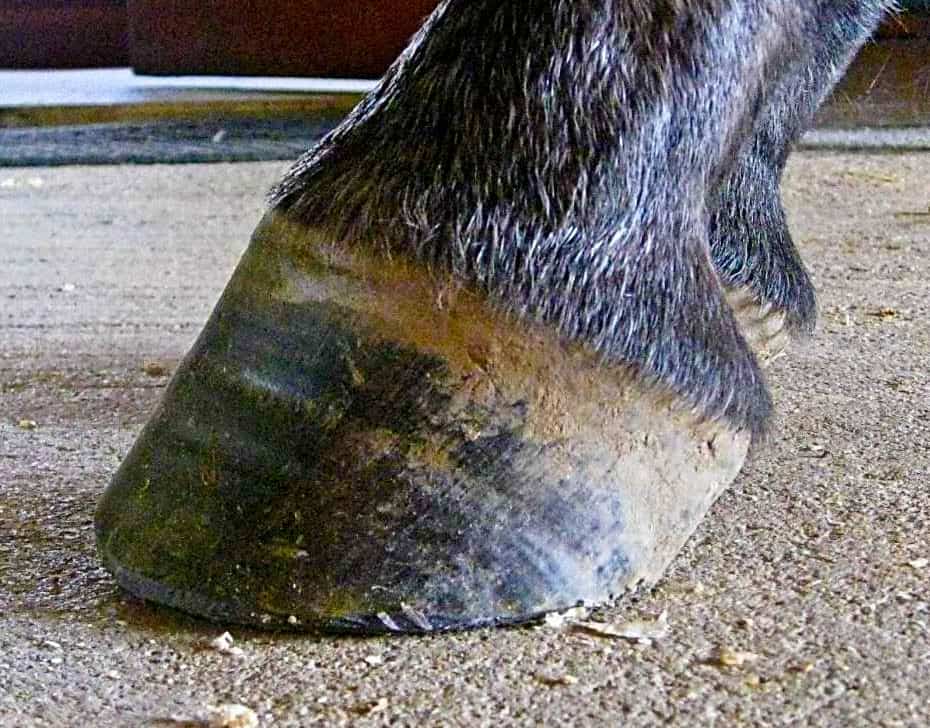



The Tolerable Club Foot The Horse
A horse with club foot has one hoof that grows more upright than the other The "up" foot is accompanied by a broken forward pastern, that is, the hoof is steeper than the pastern (Photo 1) In a normal foot, the hoof capsule and the pastern align Radiographs will show that the boney column itself is misaligned, with permanent rotation of the coffin joint (Photos 2 and 3) 1 2 3 www treatment • goal to achieve plantigrade foot flexibilty cosmetically acceptable functional and pain free foot in shortest treatment time • principles soft tissue contracture release or stretching to restore normal tarsal relationship once normal tarsal relationship attained, correction should be maintained till tarsal bones remoulds stable articular surface Q How should I treat a grade 3 or 4 laminitic club foot?




Ballerina Syndrome Where The Heels Remain Off The Ground Even At The Download Scientific Diagram



Club Feet The Brutal Truth David Farmilo
Contracted heels in horses sometimes are mistakenly called club foot These are in fact two different conditions but have a lot in common and the result is similar Cases of contracted heel can be primary or secondary In primary cases, contracted heel is a result of unbalanced feet or overgrown hoofs In secondary cases, contracted heels are caused by lameness and disuse ofThe treatment for most fractures of the short pastern bone require surgical repair Some residual lameness usually remains after healing and depends on the degree of arthritis present in surrounding joints The outlook depends on how comfortable the horse is after fracture repair If uncomfortable, the horse has an increased risk of laminitis in the opposite limb Fractures of the Surgery often a necessity for a horse with a club foot Flickrcom Smerikal There are three general causes of club feet genetic, nutritional, and grazing stance (with one foot forward and one back) – and a combination of these Club feet are more common in some breeds and in specific bloodlines within those breeds Their incidence is very low since it is a recessive




Equine Surgery Del Oeste Equine Hospital Eugene Or



2
Treatment Ponseti method (manipulation, casting, cutting the Achilles tendon, braces), French method, surgery Prognosis Good with proper treatment Frequency 1 to 4 in 1,000 Clubfoot is a birth defect where one or both feet are rotated inward and downward The affected foot and leg may be smaller than the other Approximately 50% of cases of clubfoot affect both feet Most ofClub foot is a congenital or acquired flexural deformity of the distal interphalangeal joint (DIPJ) in young horses and a hoof capsule distortion as a result of shortening of the deep digital flexor musculotendinous apparatus Most club feet are handled while the horse is young An acquired club foot as an adult is most likely caused by chronic lameness or an injuryPresumably, the term was coined to describe the upright or straight tubular appearance of the foot, where there is little expansion of the hoof capsule, giving a "clublike" appearance, but this is an overly simplistic definition The clinical presentation in the horse can range from a mildly upright and a small foot to one that is buckled forward with an angle greater than 90° at the
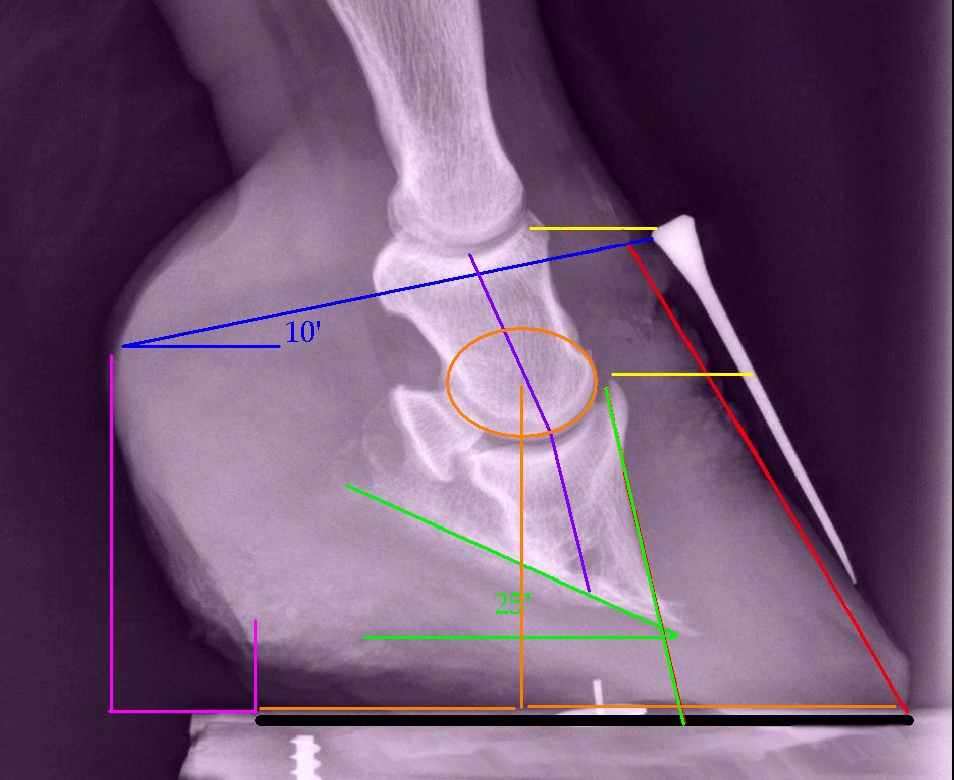



High Heels The Laminitis Site




How To Treat Your Horse S Thrush Expert How To For English Riders
Club foot refers to a limb flaw, where the hoof is very upright with a long heel This is the most common tendon flaw in foals The deep digital flexor tendon (DDFT) is much shorter than the bones Thus, it pulls onAnce of the foot, where there is little expansion of the hoof capsule, giving a "clublike" appearance, but this is an overly simplistic definition The clinical presentation in the horse can range from a mildly upright and a small foot to one that is buckled forward with an angle greater than 90° at the distal Clubfoot can be repaired by casting or surgery Casting Sometimes nonsurgical treatments, such as casting, can correct clubfoot Casting is
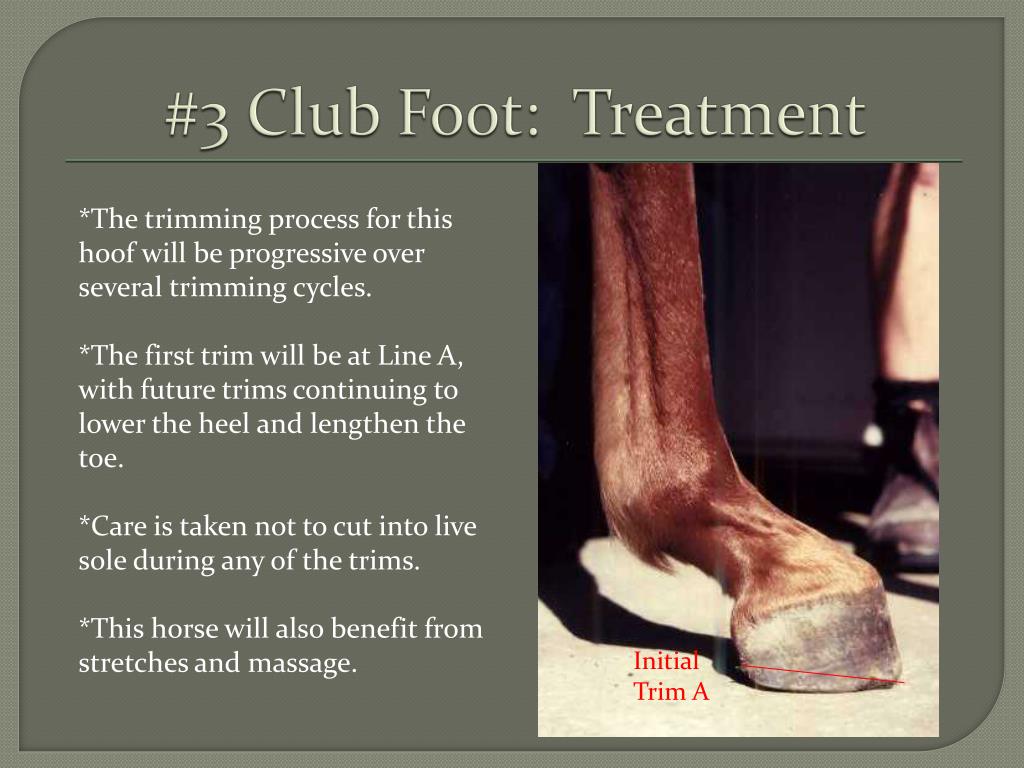



Ppt 5 Most Common Hoof Pathologies Powerpoint Presentation Free Download Id




How To Treat Club Feet And Closely Related Deep Flexor Contraction
Treatment varies with the age of the horse and severity of the case Early treatment results in the best prognosis Lower leg and hoof anatomy of a normal horse What is club foot?Flexural Deformities in the Mature Horse Club Feet Fig 7 Fig 7 A grade 3 club foot on a mature horse Note the broken forward hoofpastern axis, the concavity in the dorsal hoof wall, the disparity in hoof wall growth between the toe and the heel, and the poor hoof wall consistency distally There is minimal information in the veterinary literature regarding the management of aIn the genetic club footed horse, the cannon bone of the clubby foot is slightly



Is This A Club Foot Horsetalk Co Nz



Club Feet The Brutal Truth David Farmilo
Anklefoot orthoses (AFO's), is a hard rigid molded plastic splint held on with velcro worn on the lower leg and foot to support the ankle, hold the foot and ankle in the correct position, and correct footdrop This type of AFO was used for clubfoot surgical treatment methods and is not part of the Ponseti MethodA club foot is a DEFORMITY and for any horse to win at top level competition it needs every possible advantage and no drawbacks The only way to stop continuing problems with club footed horses is not to breed from them After 11 months of gestation, it is a costly and heart breaking exercise if it results in a club footed foal If you do have a club footed foal then do the right thing Club foot 1 CLUB FOOT Presented By Sushant 2 INTRODUCTION Talipes Latin talus (ankle) pes (foot) Equino indicates the heel is elevated (like a horse's) varus indicates it is turned inward It is a congenital malformation of the lower extremity that affects the lower leg, ankle, and foot Club foot, also called congenital talipes equinovarus (CTEV), is




Fighting Laminitis Expert How To For English Riders




Is This A Club Foot Horsetalk Co Nz
The foal grazed onefooted too long and shortened his tendon (the "grass foot" theorymarkedly club footed horses always graze with the club foot beneath them and the nonclub foot extended They never exchange legs) the inferior check ligament which attaches the deep flexor tendon at its midpoint to the top of the canon bone is too short and the tendon can't stretch as much as itClub foot treatment Once the condition is beyond trimming alone then toe protection, both solar and around the wall is desirable Dependent upon severity, veterinary surgical intervention may also be required in the form of a sub carpal check ligament desmotomy to reinstate normal extension of the limb After foot preparation and required Imprint Hoof Repair material is added to the foot Surgery often a necessity for a horse with a club foot Flickrcom Smerikal There are three general causes of club feet genetic, nutritional, and grazing stance (with one foot forward and one back) – and a combination of these Club feet are more common in some breeds and in specific bloodlines within those breeds Their incidence is very low since it is a recessive




Recognizing And Managing The Club Foot In Horses Horse Journals




Foal Deformities Imprint Equine Foot Care
A That depends on a number of factors Among these would be what phase of laminitis the horse is in acute, chronic or postchronic The appropriate treatment is dictated by the state of the disease Bottom line, the same principles apply no matter the conformation of the foot




Farriery For Mismatched Feet
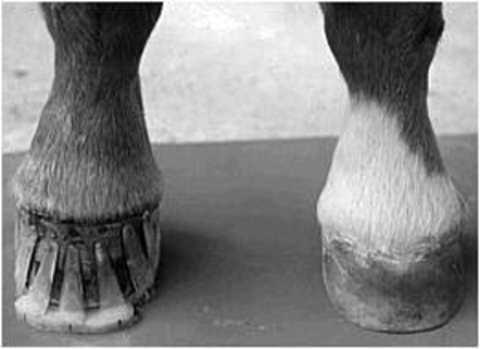



Club Feet In Foals
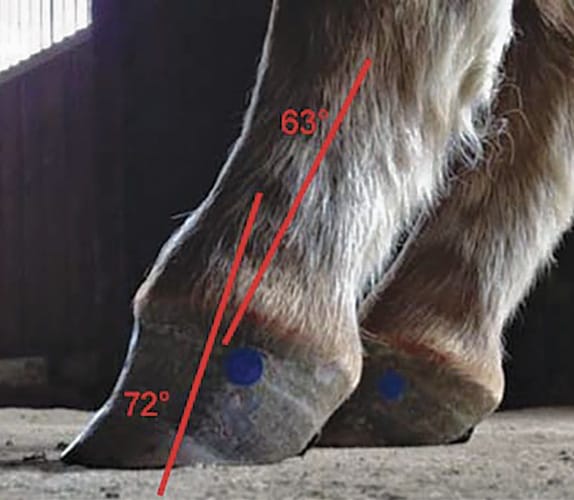



Defining And Fixing A Horse S Club Foot American Farriers Journal



Equine Podiatry Dr Stephen O Grady Veterinarians Farriers Books Articles




Recognizing And Managing The Club Foot In Horses Horse Journals




Club Foot
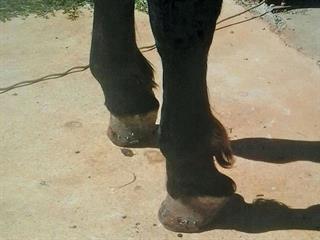



How To Treat Contracted Tendons Farmer S Weekly



Equine Podiatry Dr Stephen O Grady Veterinarians Farriers Books Articles




Club Foot Or Upright Foot It S All About The Angles American Farriers Journal




Does My Horse Have Pyramidal Hoof Disease The Horse
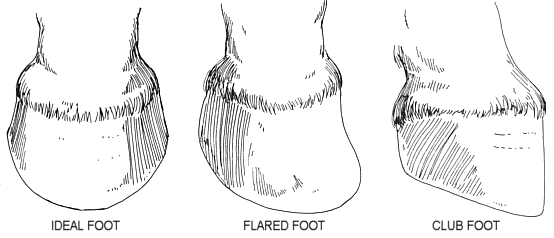



Animal Mrt Effect Of Hoof Distortion On Muscoskeletal Issues
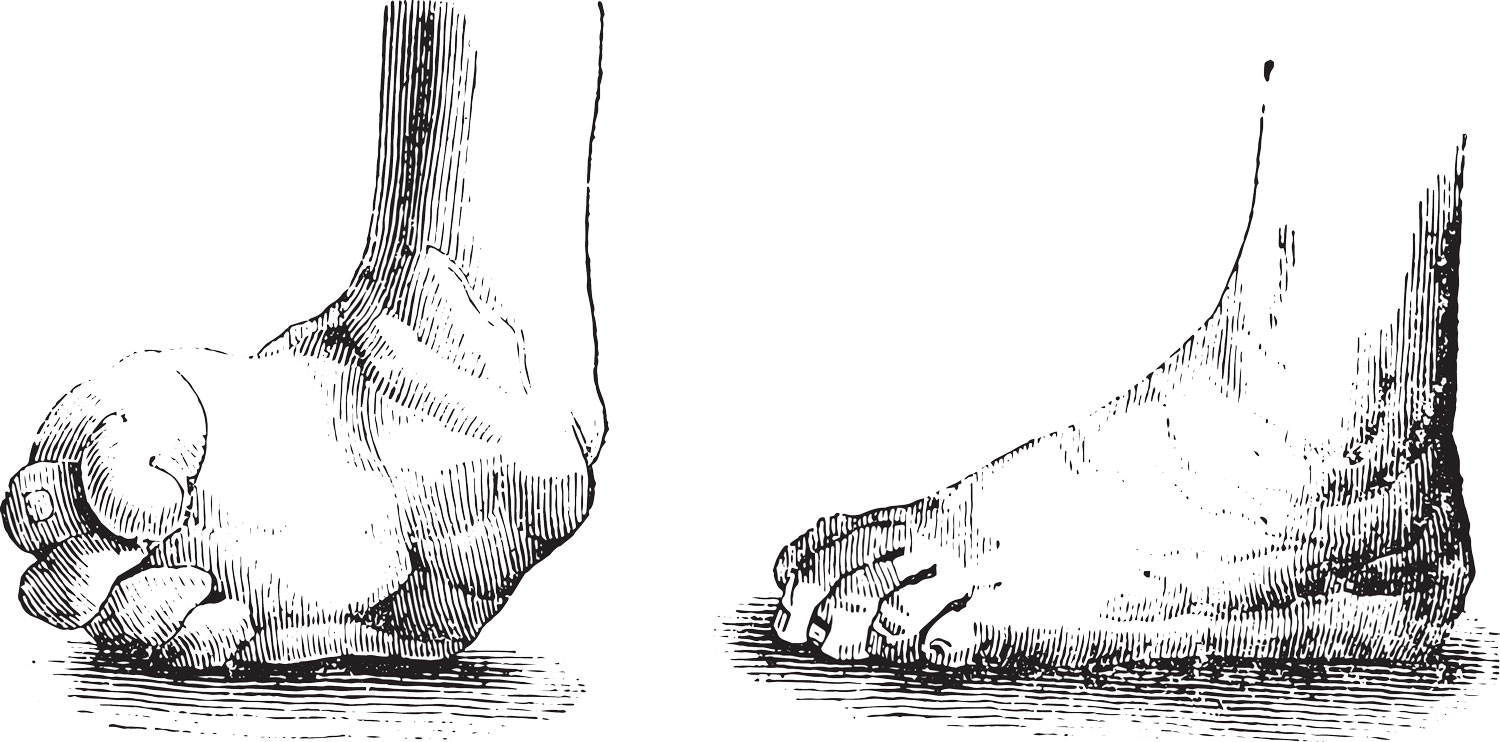



What Is Clubfoot Causes And Treatment Canyon Oaks Foot Ankle
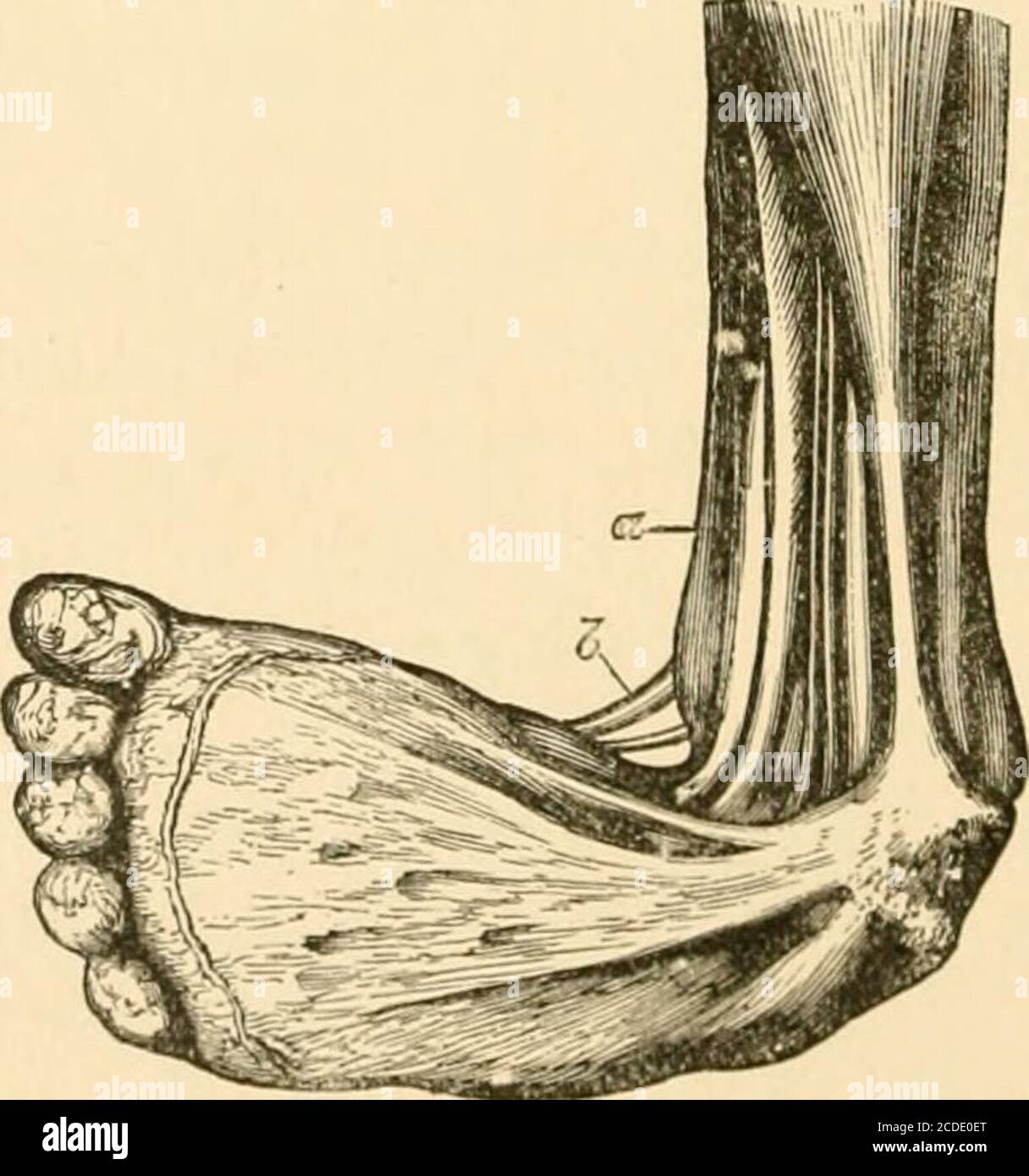



The Surgical Treatment Of The Common Deformities Of Children Fig 49 Dissection Of Equino Varus Club Foot Dorsal View Adams Displacement Of The Internal Cuneiform Bone Thisinclination Inwards Affects More Or Less All
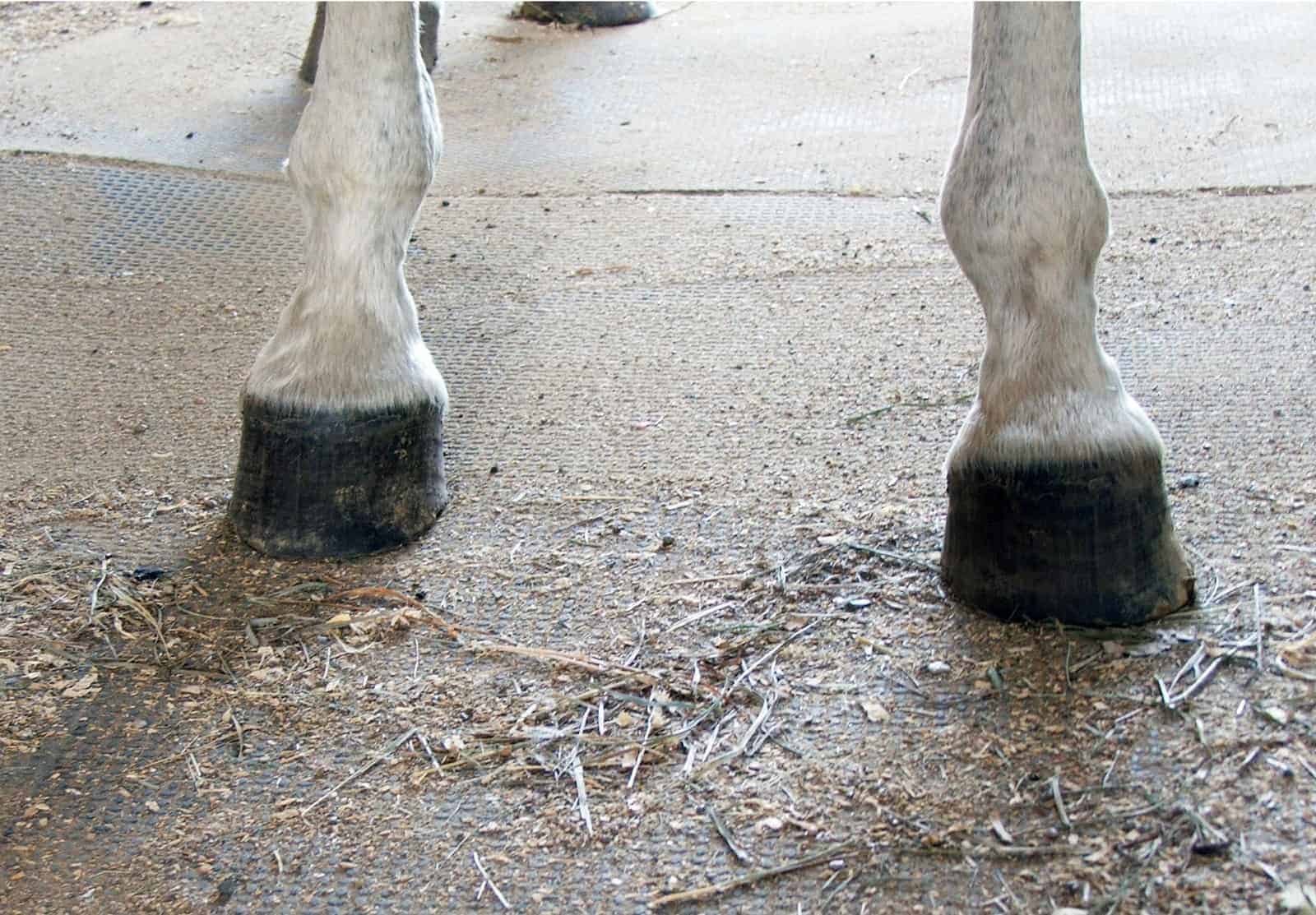



Club Foot Heritability In Horses The Horse




Understanding Club Foot The Horse Owner S Resource




Horse Club Foot




Ballerina Syndrome Where The Heels Remain Off The Ground Even At The Download Scientific Diagram




A Practical Manual Of The Treatment Of Club Foot He Returned On The 10th Of June Thirteen Daysafter The Operation The Wounds Had Partly Healedwithout Any Suppuration And The Child Had Sufferedvery




Recognizing And Managing The Club Foot In Horses Horse Journals




Recognizing And Managing The Club Foot In Horses Horse Journals
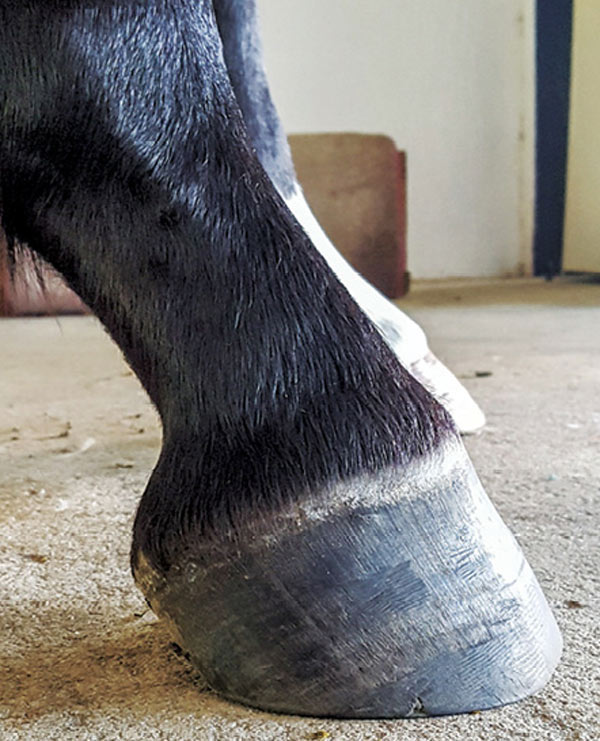



Club Foot Or Upright Foot It S All About The Angles American Farriers Journal




A Club Foot Is Caused By Mobile Equine Diagnostics Inc Facebook
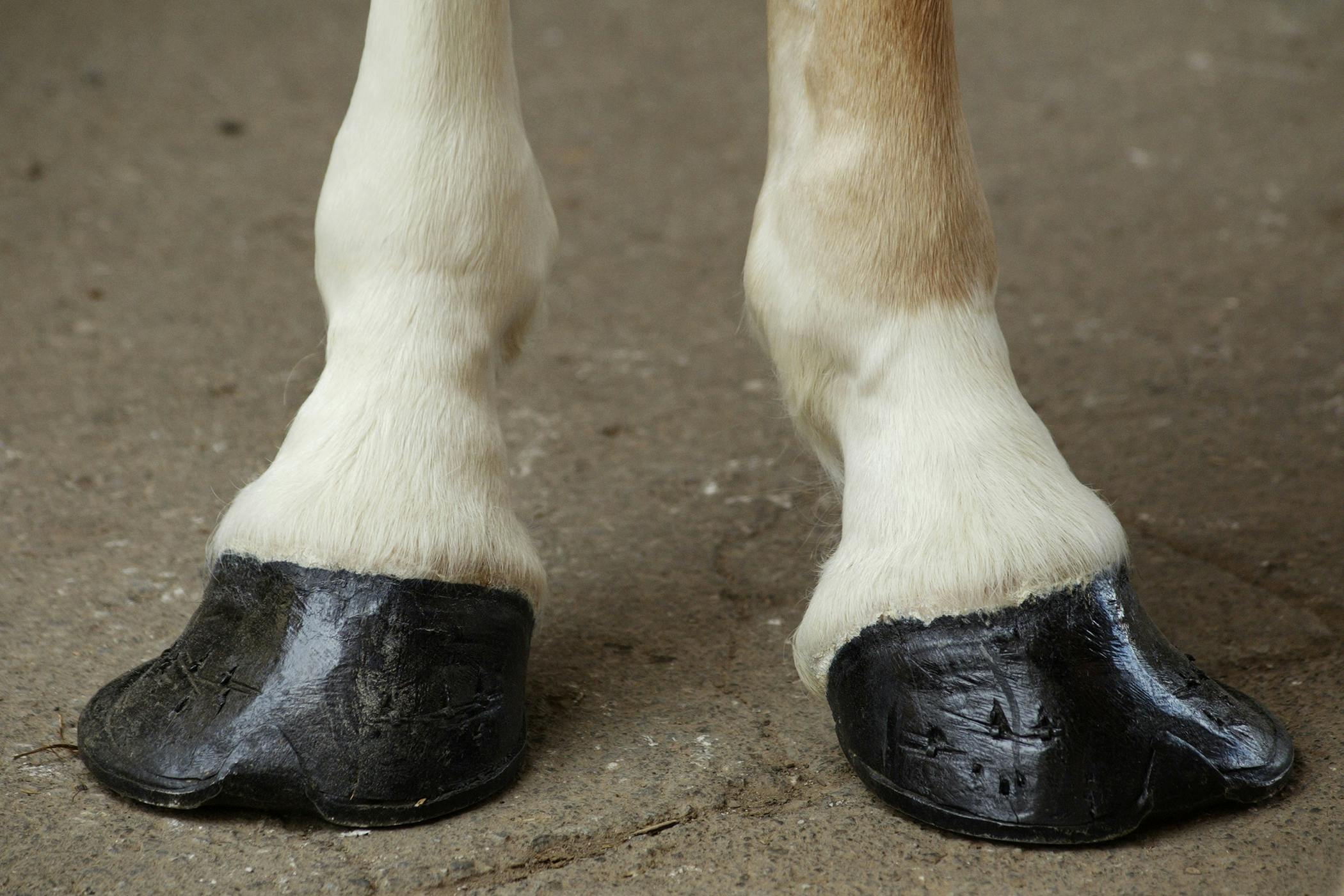



Club Foot In Horses Symptoms Causes Diagnosis Treatment Recovery Management Cost




Understanding Club Foot The Horse Owner S Resource




Hoof Conformation Vs Horse Conformation Scoot Boots Retail



2




Recognizing And Managing The Club Foot In Horses Horse Journals
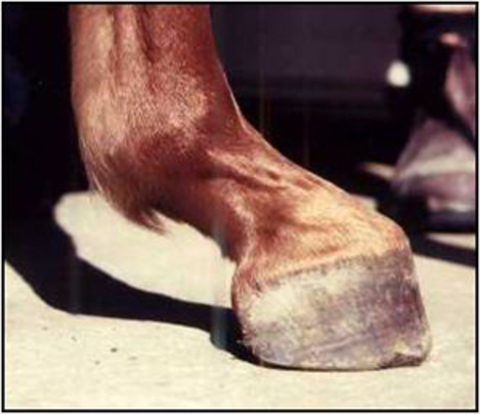



Club Feet In Foals



Welcome Princess 17 Page 2 Zenyatta Com Forums




Pdf Management Of Clubfoot In Horses Foals To Adults Semantic Scholar



Club Foot




Understanding Club Foot The Horse Owner S Resource



2




Living With Clubfoot What Shoes I Wear As An Adult




Club Foot What Does The Future Hold For Your Foal H H Vip Horse Hound
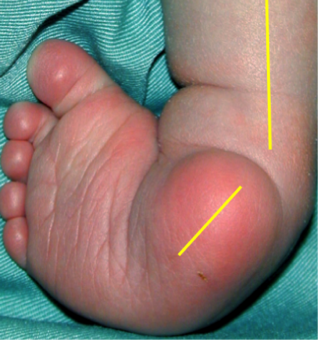



Assessing Children With Clubfoot Physiopedia




Low Heel High Heel Syndrome Dr Kerry Ridgway



1




Shoeing Options For Club Foot In Horses



1




Understanding Club Foot The Horse Owner S Resource




Club Foot In Horses Brian S Burks Fox Run Equine Center Facebook
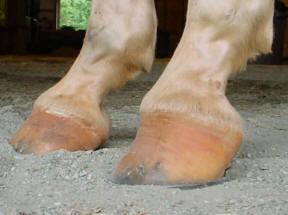



Club Foot




My Horse Has A Club Foot Can It Be Treated Equimed Horse Health Matters
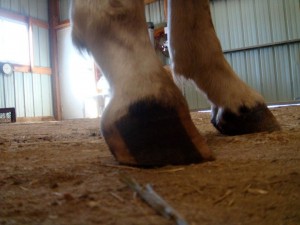



Equine Club Foot




Bad Feet Is It Nature Or Nurture Excerpt From The Essential Hoof Book



1



Club Foot In Horses Equine Chronicle




Club Foot Ronaldmarshall




Managing The Club Foot The Horse



So Called Club Foot By James R Rooney Dmv
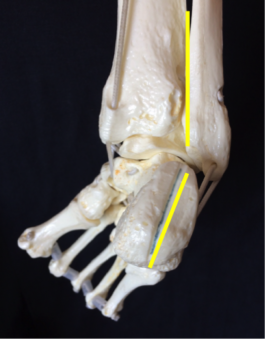



Assessing Children With Clubfoot Physiopedia




What Causes Club Feet American Farriers Journal




Understanding Club Foot The Horse Owner S Resource
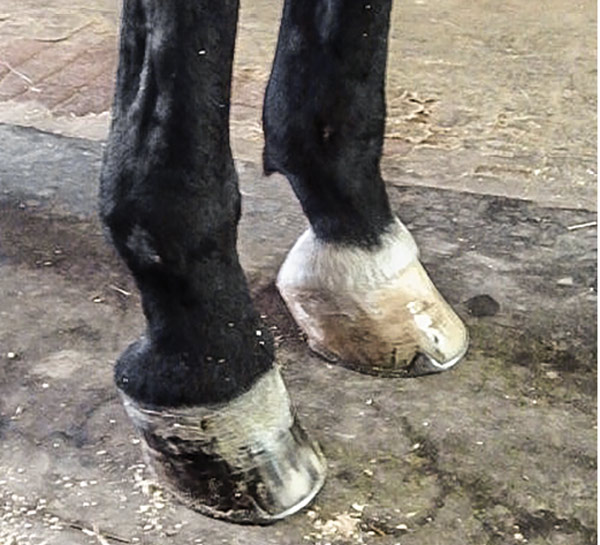



What Advice Has Been Most Helpful When You First Encounter A Club Foot American Farriers Journal




The Chronicle Of The Horse
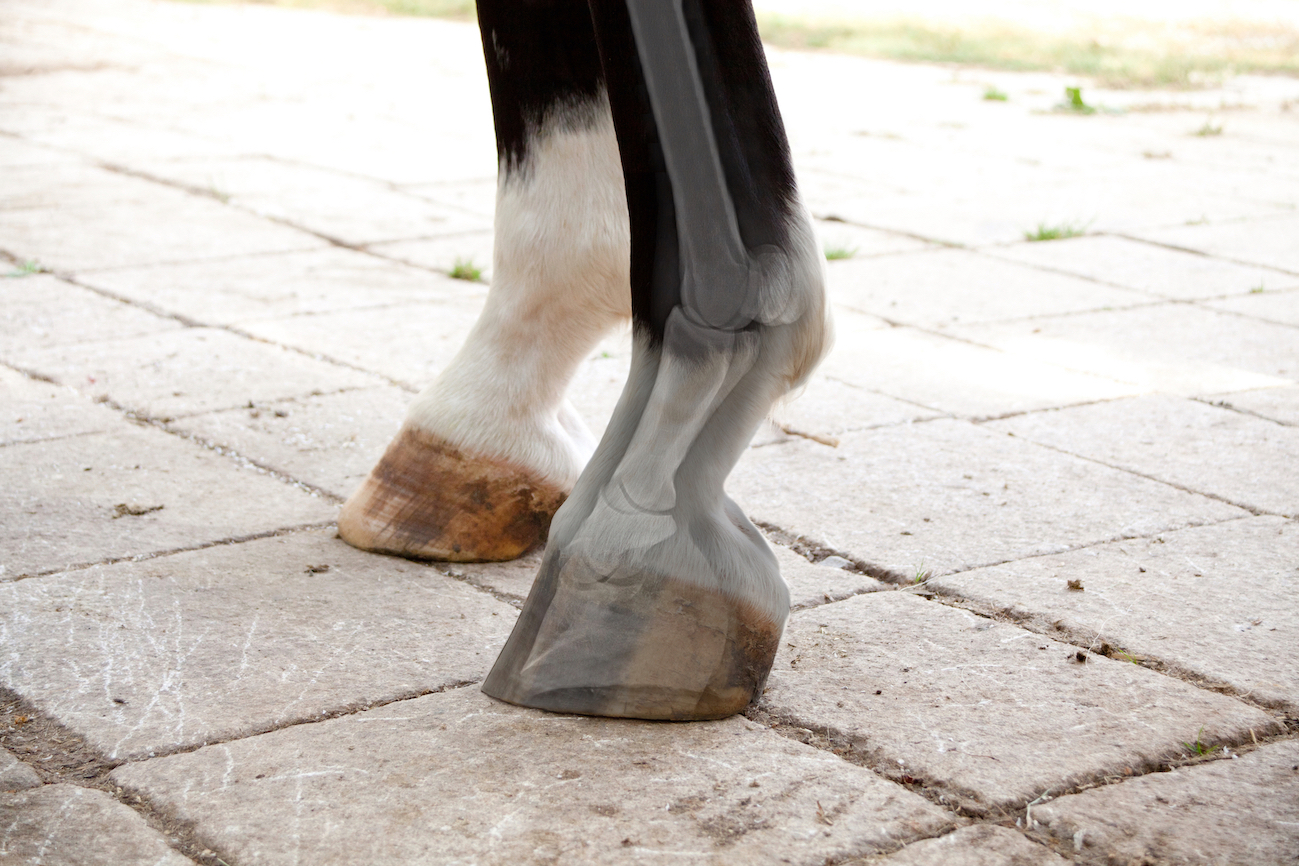



Founder And Laminitis Mcdowell S Herbal Treatments




Shoeing Options For Club Foot In Horses
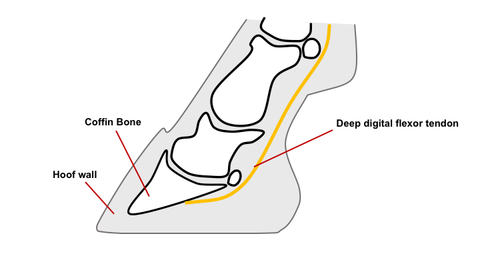



Club Feet In Foals




Defining And Fixing A Horse S Club Foot American Farriers Journal
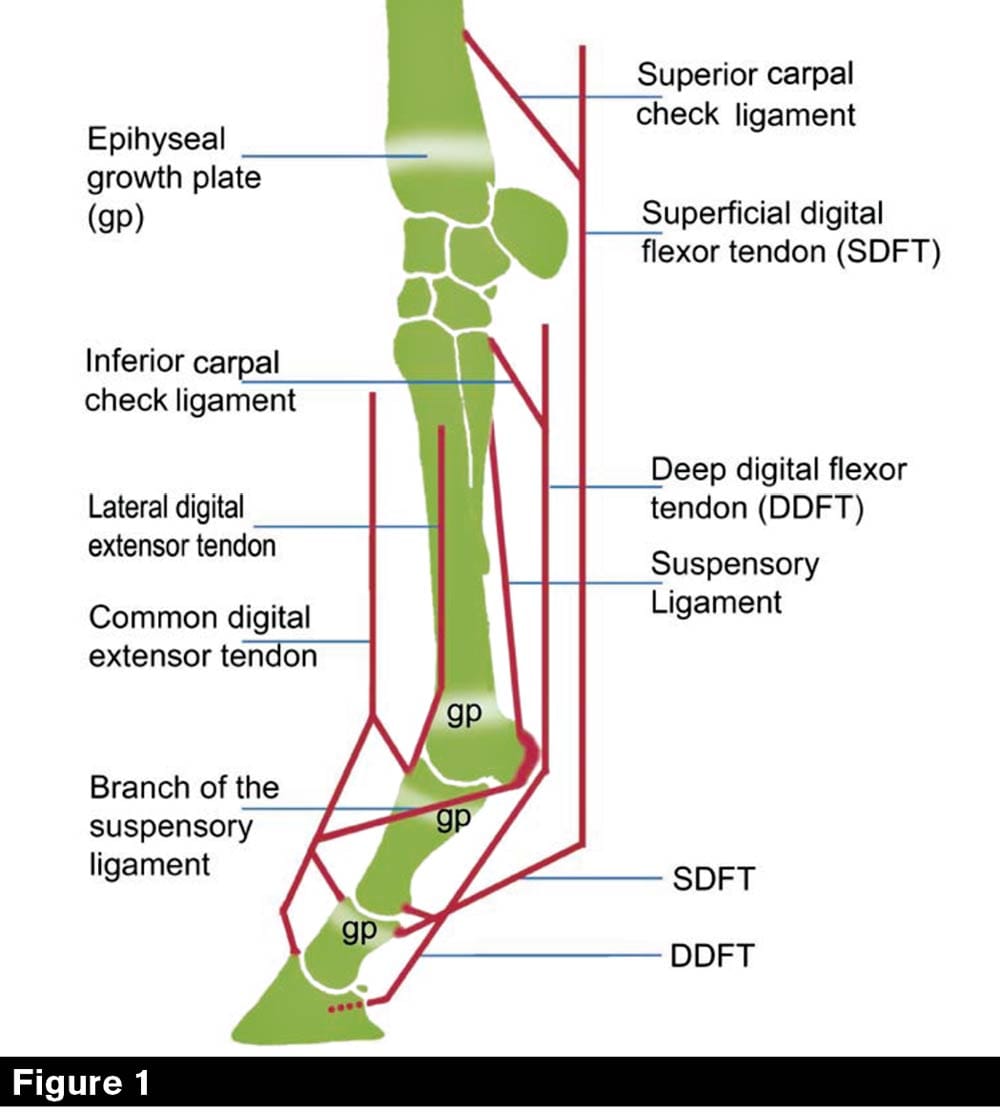



Defining And Fixing A Horse S Club Foot American Farriers Journal



Equine Podiatry Dr Stephen O Grady Veterinarians Farriers Books Articles




Shoeing Options For Club Foot In Horses




Coping With Club Foot




Farriery For Mismatched Feet




Hoof Conformation Vs Horse Conformation Scoot Boots Retail
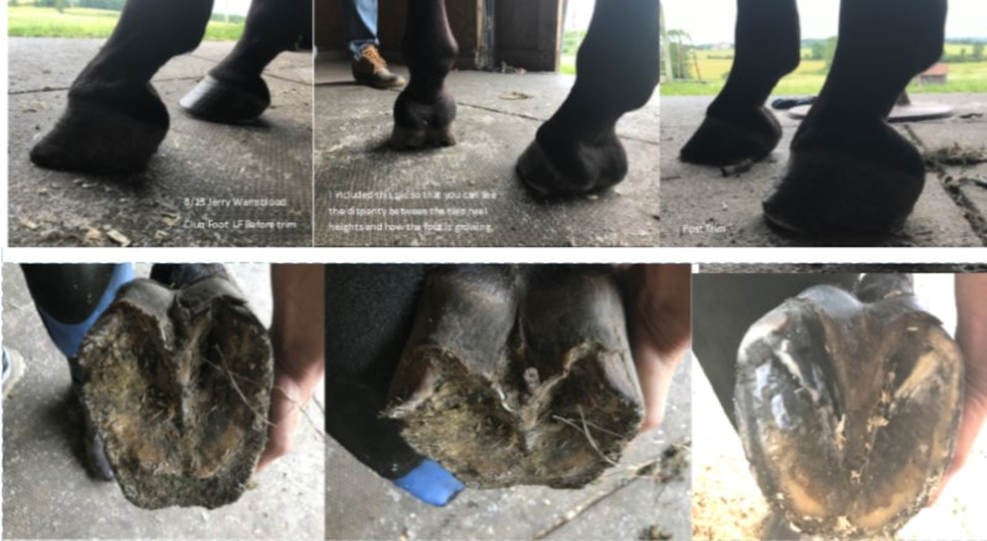



Portfolio Barefoot Trimming
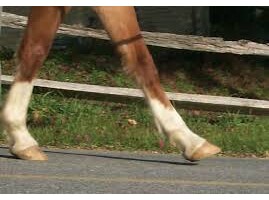



Animal Mrt Effect Of Hoof Distortion On Muscoskeletal Issues
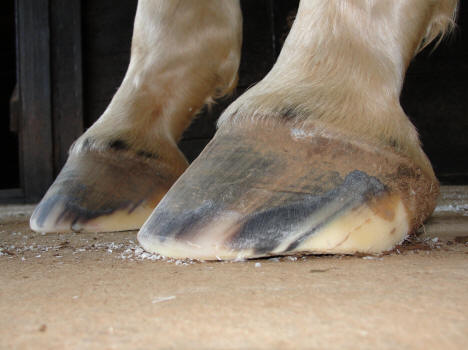



High Low Hooves




Coping With Club Foot




Hoof Conformation Vs Horse Conformation Scoot Boots Retail



2



Lesson 4




The Club Foot Is It No Big Deal Or A Deal Breaker



2




What Shape Are My Horse S Feet In The Horse



Horse Foot
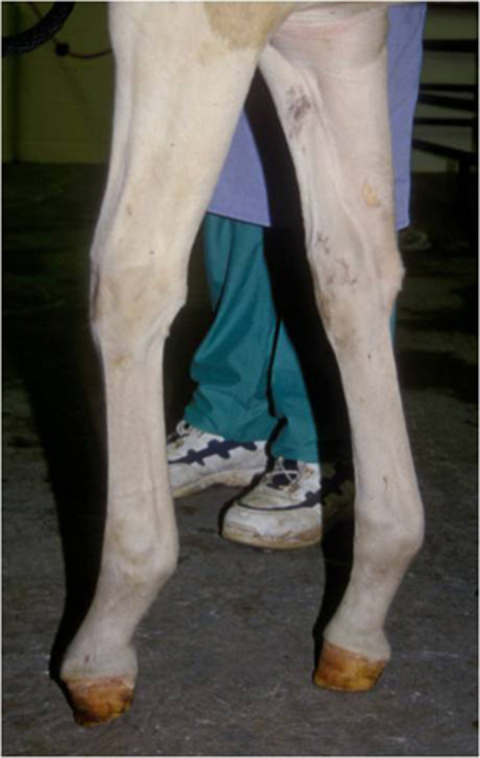



Club Feet In Foals
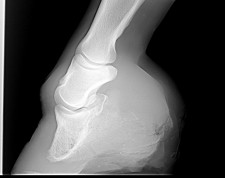



Equine Club Foot




Why Some Horses Develop A Clubbed Foot Holistichorse Com



0 件のコメント:
コメントを投稿